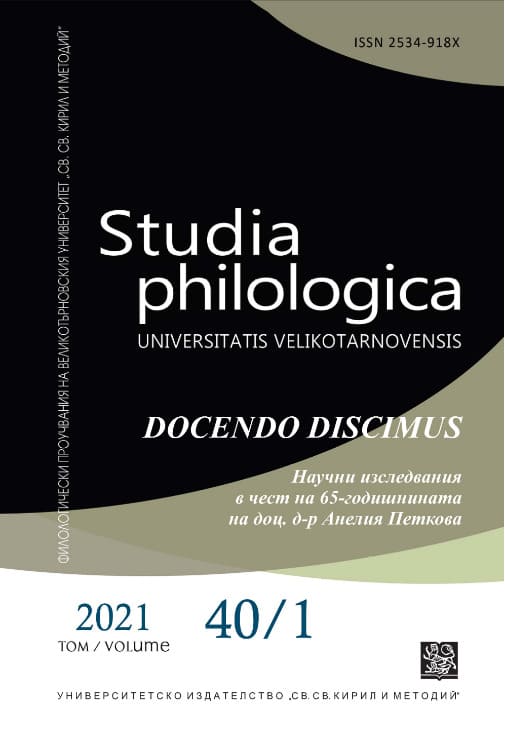Акустични характеристики на посталвеолните консонанти в българския и препалаталните консонанти в румънския език
Acoustic Characteristics of the Postalveolar Consonant in Bulgarian Language and Prepalatal Consonants in Romanian Language
Author(s): Vladislav MarinovSubject(s): Language studies, Language and Literature Studies, Theoretical Linguistics, Phonetics / Phonology, Comparative Linguistics, South Slavic Languages
Published by: Великотърновски университет „Св. св. Кирил и Методий”
Keywords: palato-alveolars; alveolo-palatals; bilingualism; L2 phonetic acquisition
Summary/Abstract: Current study examines the articulatory and acoustic characteristics of the consonants in Bulgarian and Romanian languages which are articulated in front of the hard palate adjoined with the alveolar ridge. The spectral values of the consonants ш, ж, ч and Џ in the Bulgarian language and ş, j, č and ğ in the Romanian language are analyzed. Bulgarian consonants according to their place of articulation are considered to be postalveolar (palato- alveolar) consonants ʃ, ʒ, t͡ ʃ and d͡ ʒ, and the Romanian consonants are determined to be prepalatals (alveolo-palatal) ɕ, ʑ, ͡tɕ and d. The changed place of articulation affects the acoustic characteristics of the Romanian consonants, which are defined by Bulgarians to be softer than the Bulgarian consonants. In the spectrograms combinations of palato-alveolar / alveolo-palatal consonants + vocals are outlined characteristics that coincide with the peculiarities of the soft consonant + vocal combinations in the Bulgarian language.
Journal: Studia Philologica Universitatis Velikotarnovensis
- Issue Year: 40/2021
- Issue No: 1
- Page Range: 255-264
- Page Count: 10
- Language: English, Bulgarian

